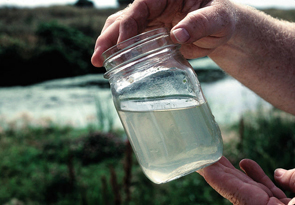WASHINGTON, Sept. 27, 2017 - A coalition of environmental groups, joined by the National Farmers Union and National Sustainable Agriculture Coalition, want Congress to tighten enforcement of conservation compliance, increase spending on conservation programs and revise crop insurance rules to encourage more farmers to plant cover crops.
An eight-page set of farm bill proposals released Tuesday also calls for making the 2014 farm bill’s Sodsaver provision nationwide. Currently limited to six states, Montana, North Dakota, South Dakota, Minnesota, Iowa, and Nebraska, the provision slashes crop insurance premium subsidies to farmers who convert native prairie to crop production.
The coalition says the conservation title needs a “substantial increase in funding ... to address critical natural resource problems and growing producer and landowner demand.” Any increase in funding for some conservation programs should not come at the expense of others, the coalition says.
Some of the coalition’s key proposals:
-- Conservation compliance: Preserve the linkage to crop insurance as well as conservation and farm programs and mandate a 5-percent spot check rate for each state to ensure farmers are following the requirements. The farm bill should also mandate the collection and public reporting of aggregated  data on determinations of wetlands and highly erodible land and acres that are out of compliance.
data on determinations of wetlands and highly erodible land and acres that are out of compliance.
-- Crop insurance. Lower barriers to cover crops by, among other things, shifting the cover crop termination rules from eligibility requirements to the “good farming practices" (GFP) process, and allow producers to manage cover crops using local information and expertise. Congress also should consider linking buy-up insurance coverage to adoption of risk-mitigating conservation practices.
-- Conservation Reserve Program. Increase the 24-million-acre cap by an unspecified amount and increase funding for the Transition Incentives Program, which encourages contract holders to transfer land to new farmers. Additional CRP acreage should be devoted to high-value practices that reduce soil erosion, improve water quality, and provide wildlife and pollinator habitat through the Conservation Reserve Enhancement Program, and State Acres for Wildlife Enhancement enrollments.
-- Environmental Quality Incentives Program. Focus EQIP on state or locally determined priority resource concerns, and increase the minimum percentage of funds required to be used for wildlife conservation practices and related benefits, including water quality, soil health, pollinator habitat and carbon sequestration.
-- Conservation Stewardship Program. Maintain current acreage levels and increase the average payment rate. The farm bill also should increase the supplemental payment rate for resource-conserving crop rotations while authorizing new supplemental payments for management-intensive rotational grazing and comprehensive conservation planning.
The coalition includes Defenders of Wildlife, Environmental Defense Fund, Environmental Working Group, National Audubon Society, National Wildlife Federation, Natural Resources Defense Council, Soil and Water Conservation Society and the World Wildlife Fund. The coalition doesn’t include sportsmen groups, such as Pheasants Forever and the Theodore Roosevelt Conservation Partnership, who earlier endorsed a separate set of proposals. That coalition, which includes The Nature Conservancy, also proposed to make Sodsaver nationwide and urged Congress to increase the CRP cap to 35 million acres.
#30
For more news, go to www.Agri-Pulse.com


